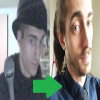Too late to edit post. I should've deleted "and enjoyment of the present", too vague.
... anecdotes to get a discussion started ...
Dopamine: Liking / Consummatory anhedonia?
[OP paper]
Finally, studies have found that increasing DA shows no effect on liking behavior. Genetically modified mice that exhibit a knock-down of the Dopamine Transporter (DAT) gene, thereby resulting in increased extracellular DA, showed no alterations in liking responses (Pecina et al., 1997). In sum, these findings provide clear evidence that DA function is neither necessary nor sufficient for hedonic liking responses to occur
→ source (external link)
Dopamine: Wanting / Motivational anhedonia?
[OP paper]
A second line of work has sought to demonstrate a pivotal role for DA in the motivation to pursue rewards, as indexed by over-coming response costs (Salamone et al., 2007). As shown in Fig. 3, Salamone and colleagues developed experimental paradigms that evaluate an animal’s willingness to work for a given reward ... rats enter a T-shaped maze and made a choice between one arm of the maze containing a readily available food reward (Low-Cost/Low Reward, “LC/LR”), and another arm containing a larger food reward that was available only after climbing a barrier (High-Cost/High-Reward, “HC/HR”). Using this choice-paradigm, it was demonstrated that while control rats prefer the HC/HR option, rats with NAcc DA lesions or blockade of striatal D2 receptors show increased preference for the LC/LR option.
→ source (external link)
Therefore, it is possible that psychostimulant-enhanced DA transmission in the BLA results in potentiated emotional salience and seeking (Ledford et al., 2003) of sexual reward, thus contributing to the enhanced sexual drive and desire reported by Meth abusers (Semple et al., 2002, Green and Halkitis, 2006).
...
mesolimbic DA efflux has been correlated to facilitation of the initiation and maintenance of rat sexual behavior (Pfaus and Everitt, 1995). Furthermore, DA manipulation studies show DA antagonists in the NAc inhibit sexual behavior, while agonists facilitate the initiation of sexual behavior (Everitt et al., 1989, Pfaus and Phillips, 1989). Thus, Meth may affect motivation for sexual behavior via activation of DA receptors.
→ source (external link)
Risk vs Reward Behavior / Decisional anhedonia:
[OP paper definition]
Using the preclinical literature’s focus on decision-making as a guide, it may prove useful to explicitly characterize anhedonia in terms of abnormal reward-based decision-making. Consequently, we propose that one manifestation of anhedonic symptoms may result in an impaired ability for normative decision-making. We term this “decisional anhedonia”, wherein the ability to balance costs and benefits when selecting among multiple options is impaired. We emphasize that decisional anhedonia is independent from cognitive or reasoning ability; making poor choices about complex financial instruments does not imply decisional anhedonia. Rather, we suggest that decisional anhedonia occurs when reward-based decision-making has (1) changed from a pre-morbid state and, (2) results in choices that substantially differ from normative decisions about potential cost–benefit choices. Importantly, we are not suggesting that decisional anhedonia is necessarily orthogonal to motivational or consummatory anhedonia. Rather, we suggest that the general, steady-state aspects of either motivational or consummatory anhedonia (or both), may lead to distinct decision-making impairments such that individuals overestimate future costs, underestimate future benefits, or simply fail to integrate cost/benefit information in a consistent manner, leading to erratic choice behavior. The critical benefit of focusing on a decisional anhedonia is that it provides clear behavior hypotheses and can be more readily linked to animal models. One key component of decisional anhedonia may be an overestimation of costs associated with gaining different types of rewards.
→ source (external link)
Recent data from our laboratory demonstrated that mPFC lesions result in continued seeking of sexual behavior when this was associated with an aversive stimulus (Davis et al., 2003). Even though this study did not investigate the ACA, it supports the hypothesis that the mPFC (and the ACA specifically) mediates the effects of Meth on a loss of inhibitory control over sexual behavior as reported by Meth abusers (Salo et al., 2007).
→ source (external link)
Of note regarding stimulants:
The current study demonstrates at a cellular level an overlap between neural activation by the natural reinforcer sexual behavior and the psychostimulant Meth. Therefore, these data show that not only do drugs act on the same brain regions that regulate natural reward, but in fact, drugs activate the same cells involved in the regulation of natural reward.
...
Moreover, these findings illustrate that in contrast to the current belief that drugs of abuse do not activate the same cells in the mesolimbic system as natural reward, Meth, and to a lesser extent Amph, activate the same cells as sexual behavior. In turn, these co-activated neural populations may influence seeking of natural reward following drug exposure.
→ source (external link)

















































